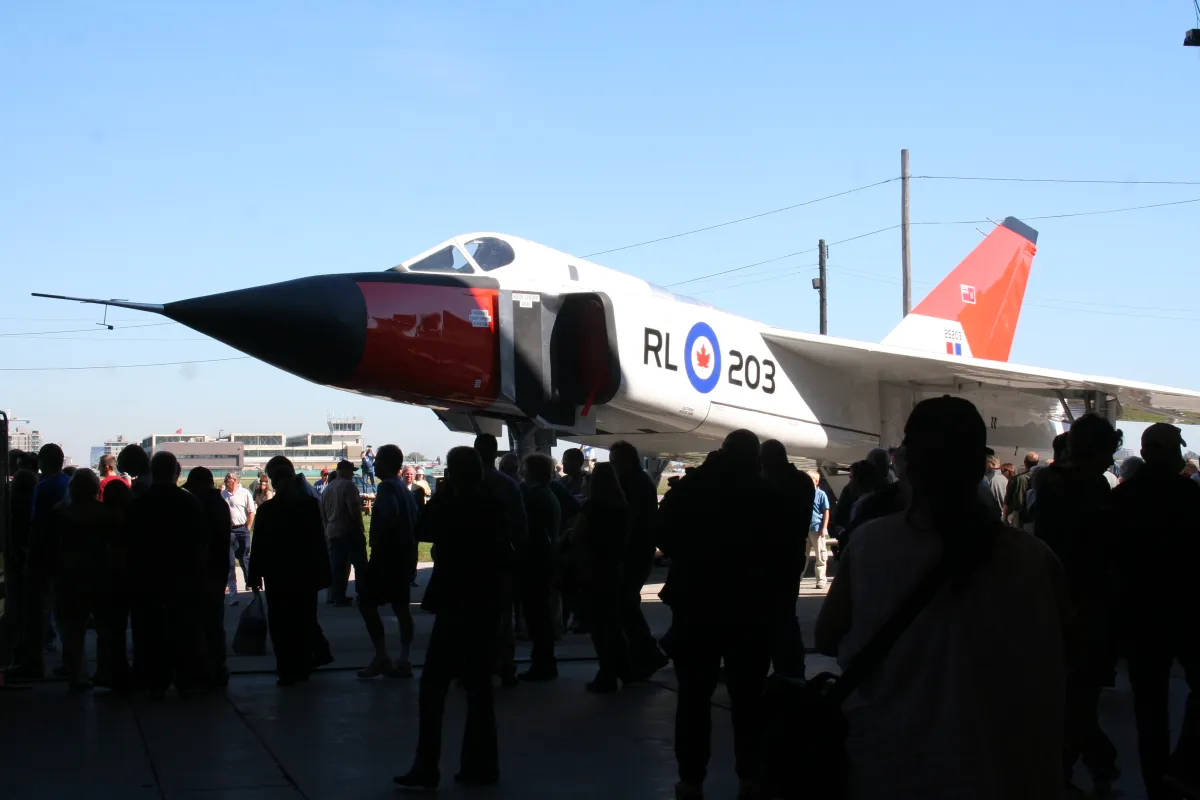The production saga of the Arrow brought together a cast of remarkable individuals to Toronto’s bustling industrial outskirts. From the charismatic Avro president, Crawford Gordon Jr., hailing from Winnipeg, to the distinguished British engineer, James C. Floyd, who clinched the prestigious Wright Brothers Medal for his groundbreaking contributions to jet transport technology, and Janusz Zurakowski, the valiant Polish fighter pilot who braved the Battle of Britain before etching his name in history as the first to soar in an Arrow.
The Ambitious Project Takes Flight
The Arrow project loomed large in every aspect — from its sheer size and scale to its audacious ambitions. Tipping the scales at approximately 20,000 kg when unladen, with a wingspan stretching 15.2 meters, the jet embodied a fusion of form and function, as eloquently described by journalist David Wilson. It proudly sported the world’s pioneering computerized flight control and weapons system. Outpacing any other jet in its class, the Arrow boasted a blistering speed, cruising at nearly double the speed of sound at an impressive altitude of 53,000 feet.
Intensive Testing and Innovation
Testing the Arrow pushed the boundaries of innovation. In an era devoid of computer simulation tools, the Avro team leaned heavily on wind tunnel trials and miniature model experiments. Launching nine scaled-down models, each a mere fraction of the full-scale aircraft, via rockets over Lake Ontario, served as litmus tests for flight worthiness. An additional pair of models took to the skies over the Atlantic Ocean.
Unveiling and Maiden Flight
The grand reveal of the Arrow on October 4, 1957, at the Avro plant, captivated a crowd of 12,000 spectators. Its sleek design, characterized by swept-back delta wings and cutting-edge electronic flight controls, cast an image of futurism, as described by journalist Ian Austen. Clad in a striking palette of blinding white, matte black, and Day-Glo orange, the Arrow epitomized the vision of tomorrow.
Taking to the skies for its maiden flight on March 25, 1958, piloted by Zurakowski, the Arrow shattered four speed records in a single swoop. Over the ensuing year, the quintet of “Mark 1” Arrows clocked a collective 66 flights. However, the more potent “Mark 2” variants, still in the works, never left the ground. Despite the aircraft’s rapturous reception, both the Arrow and Avro found themselves ensnared in a web of political intrigue and clandestine negotiations.
Navigating Political Turbulence
In June 1957, Canada bid adieu to 22 years of Liberal governance, ushering in a minority Progressive Conservative government led by Prime Minister John Diefenbaker. For Diefenbaker, reining in federal spending and asserting his authority took precedence.
Some speculate that the Arrow’s exorbitant costs hastened its demise. With a hefty price tag of $1.1 billion, the program strained the coffers of a nation the size of Canada. Moreover, concerns arose regarding the technology’s relevance, with figures like lieutenant-general Guy Simonds opining its obsolescence.
Trivia: The Clash of Personalities
Behind the scenes, Prime Minister Diefenbaker clashed with Avro’s president. A teetotaler, Diefenbaker disdained Crawford Gordon Jr.’s penchant for extravagance, particularly his indulgence in smoking and drinking. Their frequent disputes added yet another layer to the complex narrative surrounding the Arrow’s fate.
In conclusion, the Arrow saga stands as a testament to human ingenuity, marred by political upheaval and the clash of egos. Yet, its legacy endures as a beacon of innovation in Canada’s aerospace history.











Arrow saga stands as a testament to human ingenuity, marred by political upheaval and the clash of egos.